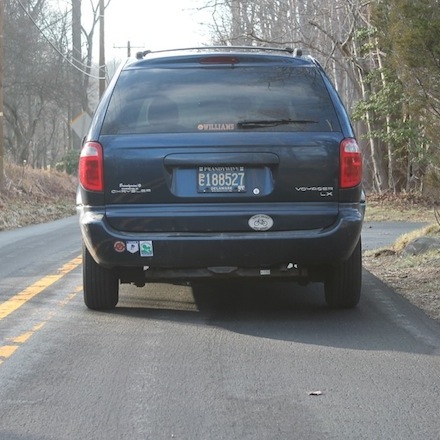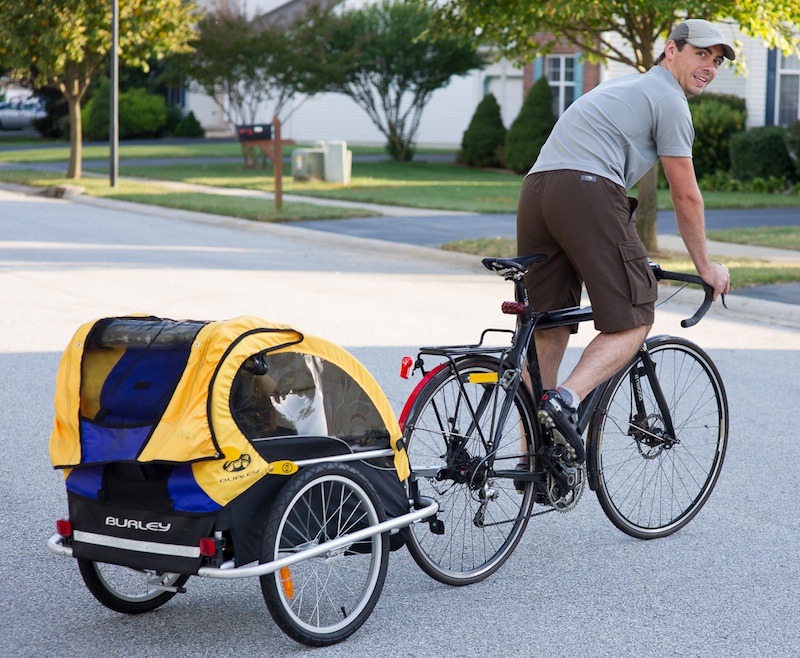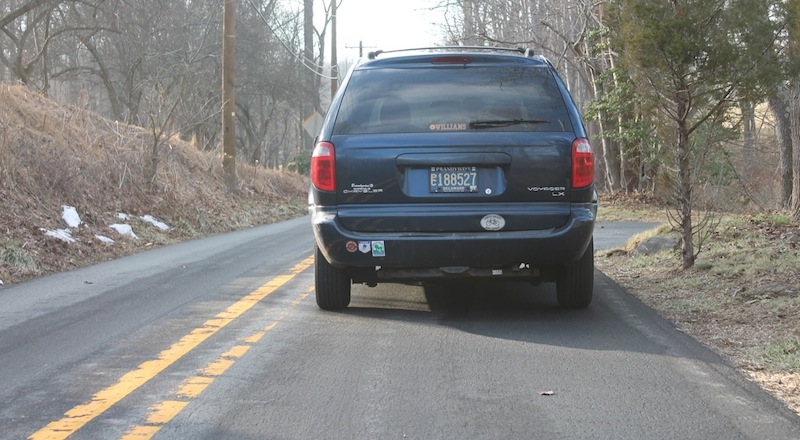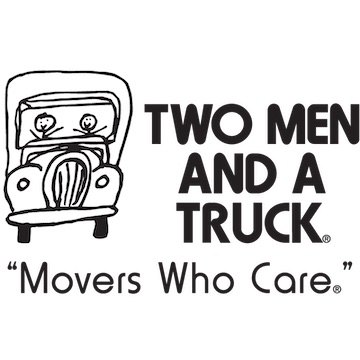Delaware Cyclist Ticketed for Riding His Bike Is Arraigned


Joe Jackson and son
UPDATE – Wednesday, January 29: Joe was “arraigned”. His trial is scheduled for May 27th at 1:30pm.
UPDATE #2 – Tuesday, May 27: Joe is found not guilty!
UPDATE #3 – October 5, 2017: Bicycle Friendly Delaware Act – which rewrites the Rule of the Road misinterpreted in Joe’s case – signed by Governor Carney
UPDATE #4 – February 11, 2018: Best Bike Laws in the Country? Check Out Delaware.
Have you ever been ticketed…just for riding your bike?
Joe Jackson has.
He was riding on Snuff Mill Road near Centerville last month when he was ticketed for violating a little bit of obscure legal language from Delaware Title 21, §4196. This law says that
“Any person operating a bicycle upon a roadway at less than the normal speed of traffic at the time and place and under the conditions then existing shall ride as close as practicable to the right-hand edge of the roadway…”
Snuff Mill Road is only about 18 to 20 feet wide here. (In some places it’s only 17 feet wide!) It doesn’t have any additional shoulder pavement. That 18 to 20 feet of pavement is all there is.

Snuff Mill Road near Centerville where Joe Jackson was ticketed for riding his bike. Where would you ride here?
Some cyclists riding on Snuff Mill will crowd over to the right (perhaps to avoid the attention of overzealous police). But no matter where a cyclist rides on a road like this, a car has to (at least partially) exit its travel lane in order to safely pass. That is why it can be unsafe to not ride in the center of a lane – which is exactly where Joe Jackson was riding when he was ticketed. If you are a motorist and you see a cyclist riding “as close as practicable” to the right edge and of the lane, you may mistakenly believe that it is possible to pass the cyclist without (at least partially) changing lanes. The reality is this: you can’t. You must (at least partially) exit your lane and travel in the lane of oncoming traffic while passing.
For cyclists, this is obvious. But in case a non-cycling motorist happens to be reading this, let’s just briefly – very, very briefly – do the math.
LANE WIDTH: 9 feet
MINIMUM CYCLIST OPERATING WIDTH: 3 feet
DELAWARE LEGAL REQUIREMENT FOR SAFE PASSING: 3 feet
AVERAGE WIDTH OF CAR: 7 feet
Without going into any more detail than this, it should be obvious why Joe Jackson was riding in the middle of the lane on Snuff Mill Road. A car cannot safely pass a cyclist inside its travel lane there. (It’s pretty obvious just from looking at the photo above, too.) And it is a potentially catastrophically dangerous misunderstanding for a motorist to get the mistaken idea that she can.
Riding in the center of the lane delivers a possibly life-saving message to motorists: you must exit your travel lane to pass me safely.
Joe Jackson was riding safely and wisely near Centerville last month. And for that he got a ticket.
But here’s the extra wrinkle in all this. In addition to riding both safely and wisely right in the middle of the travel lane on Snuff Mill Road, Joe Jackson was also riding completely legally. That’s because Delaware Title 21, §4196 contains an explicit provision for exactly what Joe Jackson was doing. Here’s the additional language:
“Any person operating a bicycle upon a roadway at less than the normal speed of traffic at the time and place and under the conditions then existing shall ride as close as practicable to the right-hand edge of the roadway except under any of the following circumstances:… When reasonably necessary to avoid conditions including…substandard width lanes that make it unsafe to continue along the right-hand edge of roadway.” … “a ‘substandard width lane’ is a lane that is too narrow for a bicycle and a vehicle to travel safely side by side within the lane.”
Bike Delaware is helping Joe present his case. His ticket would be wrong even if the “substandard width lanes” language wasn’t in the code. It can never be right to ticket a cyclist for cycling in a way to protect her safety. But Joe’s case is even more absurd. He was obeying the letter of the law…and he was still ticketed.
We are going to help Joe get this straightened out.

John Bare is the vice president of Bike Delaware.





44 Responses
When will the time come when the phrase “ignorance of the law is no excuse” will apply to law enforcement officers as well as the general public?
I sympathize with your desire for educated law enforcement personnel. I have myself been reminded that each LEO has thousands of statutes (hundreds of traffic statutes alone) to enforce, whereas we cyclists only have a hand full of specific cycling laws to remember. Therefore, we should memorize them. But yes, pushing for LEO training in understanding intent, purpose, and results of cycling law enforcement is a very high priority (IMHO).
I carry printouts of my state’s law with the clear noted exceptions highlighted as well as Fed-DOT select portions of official documents/publications including diagrams clearly showing how with a normal width bike and a normal width car the lane has to be at least 14 feet wide for a bicycle and a car to safely share side by side both within the lane. (And if either bike or car are wider then normal more width then that is required). You have to do the work for them and educate them. Often I’ve had to resort to “playing mute” and refusing to say anything in order to get them to even read the printouts. In addition I have taken up the tactic of stopping in the road when they hit their lights and sirens so there patrol car has to block the lane (which following standard cop proto-call they will park in the lane at an angle with the left front fender even with the yellow middle line and the rear right fender at the extreme right edge of the pavement) and then after they get out of their patrol car and walk up to me and I “play mute” and hand them the print out of my states FRAP law with the “lane too narrow for a bike and car to safely travel side by side” exception highlighted I will walk the bike back to beside their car and to the right of the passenger side door and with the bikes wheels on the very edge of the pavement or right up against the white line I will then gently touch the left end of my rubber handlebar end cap against the side of their car clearly demonstrating how the lane is not wide enough for both their patrol car and my bike to be in the same lane without physically touching each other !!! Even after that some of them will still write a ticket !!!
For some officers, yes, its only ignorance of the law which is a fixable condition. However, for others its deliberate malicious harassment, I’ve had more then one tell me to my face they don’t care what the law says using that exact phraseology loud and clear !!!
Dear John,
I just learned of this case in which John Bare is being ticketed for controlling a narrow lane. It was posted on Cyclists are Drivers! at https://www.facebook.com/groups/cyclistsaredrivers/permalink/10152206838809940/
I came close to having the same experience after being stopped by a law enforcement officer while controlling the curb lane on a nearby 4-lane road. However, that had an upside. After a meeting with the city manager and police chief, the city manager concluded that the law, which allowed lane control “when too narrow to share” was ambivalent. He proposed changing the law to explicitly allow a bicyclist to control the curb lane. The city council repealed the form “Far To the Right” ordinance, based on state law, replacing it with proposed language. If possible, I would suggest a similar approach, in addition to any legal response to the ticket. I’ve posted extensively on my blog, e.g.
1) Bicyclist lane control: Why the law needs changing at http://tinyurl.com/7xwlpkl
2) Ferguson first Missouri city to repeal bicyclist “Far to Right” discriminatory language, permitting bicyclist lane control at http://tinyurl.com/8dggzx2
Please let me know if I can provide any other help.
Great write-up, but one mistake. According to 1999 AASHTO the minimum operating space of a bicyclist is 40 inches. Allegedly the updated Guide specifies 4 feet. Here’s a paper that might be of interest: http://bicyclingmatters.wordpress.com/infrastructure/the-space-cushion/
All this is true. No ticket should have been issued. As for motorists who might be annoyed at the thought of Joe riding on this road, think of it this way. Even if a motorist had to follow Joe for most of the length of the road before being able to pass safely, it’s not as if the motorist would need to follow him for 15 miles as he slowly wound his way up a pass over the Sierras. Snuff Mill Road isn’t all that long. No back road in northern Delaware is all that long. . . .
We have an almost identically-worded statute here in Maine: […or a lane of substandard width that makes it unsafe to continue along the right portion of the way. For purposes of this paragraph, “lane of substandard width” means a lane that is too narrow for a bicycle … and a vehicle to travel safely side by side in the lane.] http://www.mainelegislature.org/legis/Statutes/29-A/title29-Asec2063.html
We have found that some law enforcement and DOT personnel have a lot of problems with the word “substandard”, due to its unique definition in this statute. Because “substandard” usually means something that does not meet standards published in an engineering manual, they of course bristle at the suggestion that most roads are “substandard”, even just by this definition, and it’s sometimes hard to move to get the conversation past that word. We’d like to try to redefine the statute to not use that word at all, but we were not successful in making that change in last year’s group of legislative updates.
When I am driving on back roads and the car behind me wants to go faster than I am going, even if I am doing the full legal speed limit, I politely pull over, stop, and let them go by. Why? Because just because its legal doesn’t mean you have to be a douche. That said, he shouldn’t have been ticketed. Being a douche isn’t illegal.
Barbara – I don’t think there is enough information in the above article for you to draw the conclusion you have. So why do you make this statement?
You know what should be illegal? Comparing a human being to a feminine hygiene product, that’s what.
German word for wash is douche; so when your are showering you are douching. At least in Germany.
You call him a douche, he would likely call you a b!tch. Even Steven now I guess.
Am I missing something here? Sure, when I’m going under the speed limit, whether in a car or on a bike, I’ll pull over when it’s safe and let people go if they’ve been following for a bit or there are five or more cars (that’s the law). And sometimes I pull over even if I’m going the speed limit if I’m being followed too closely by a road terrorist. But why is the person who is going the speed limit and who doesn’t pull over the “douche”? Why isn’t the person speeding on back roads the “douche”? That person is endangering cyclists, pedestrians, other drivers, and animals. Whereas the slower driver is just slowing the speeder down by a few seconds. Think about it. It’s nice to be polite, but is being polite nice when it is enabling murderers?
Barbara i agree with you in cases where there is a long distance that it is unsafe for a car to pass a bike and there is an opportunity for the cyclist to pull over, it only makes sense. but the other writer is correct, there doesn’t seem to be enough evidence to pronounce him a douche.
Where do you see in this article that ANYONE was held up even for one second by this cyclist?
He was ticketed for being there.
Riding in the center of the lane is simply a safety requirement on roads like that. You can do that AND pull over when it’s safe and prudent to do so. Hugging the curb is equivalent to flying a flag that says “It’s OK to pass me with inches to spare” and also “I”m not really entitled to be here, so you don’t have to treat me with any respect.”
Barbara,
You are my hero. Thank you.
Adolph, you’re a road maniac driving little Hitler and we cyclists KNOW YOU.
I think the issue begins with the word “practicable.” Many people interpret that word as meaning the same as “possible.”
practicable – able to be put into practice successfully.
possible – able to happen although not certain to; denoting a fact, event, or situation that may or may not occur or be so.
Is it “possible” to ride on the right edge of the road? Sure. Is the bicyclist in this situation able to do that successfully? According to the photos, I would say no. According to the law and the way it is written, the bicyclist should “take the lane.” I would suggest that any bicyclists who ride where police are a bit of a hassle, should try to work with local advocacy groups to provide some training for the police department.
Be polite, stay to the right – can get you killed on a narrow road. Most drivers will safely pass, but plenty of them will surprise you. How many times have you seen a car cross the yellow line and pass on a blind hill?
@ Barbara Warren – When there is an “over” , pulling over may be an option. From the photo it seems there is no “over” to pull to. There is no room to travel safely side by side within the lane. When a cyclist is accused and ticketed, said cyclist suffers loss of time and money, regardless of guilt or innocence. When I was ticketed, I was detained and missed my bus. I had to bike the entire rest of the commute to work, and then it rained. I arrived at work late, soaked, and with a $92 ticket in my pocket. I spent time and money preparing to fight the ticket in court. I spent money on parking fees at the courthouse. I spent 3 hours of vacation time in court. My employer, also the plaintiff in the case, refused to reimburse this time after the ticket was dismissed. In addition to all that time and money, my taxes help pay for the time the officer wasted ticketing me, and for court’s wasted time. The officer that either did not know the law, did not comprehend the law, or ignored the law suffered only a blow to his ego when the ticket was dismissed. I feel that when an unjust ticket is dismissed, a Bikes May Use Full Lane sign should be placed at the site the ticket was issued at, at the expense of the agency that issued the unjust ticket. In the long run, that would save everyone time and money. The law allowing me to ride safely had passed four years before I was ticketed. Ignorance of the law should not be an excuse for law officers!
I like your suggested consequences!
It is indeed a shame, and a disturbingly accelerating trend, that law enforcement treats the citizenry as enemies of the state, simply because they have the power to do so.
John Bare, this is a terrific write-up. You state the facts with admirable clarity.
And I congratulate Bike Delaware for coming to Joe’s defense.
Sadly, when other cyclists have been ticketed in similar situations (Eli Damon in Hadley, Massachusetts, Reed Bates in Ennis, Texas, Ken Clark in Ann Arbor, Michigan), both state and local advocacy organizations have been sadly silent, and at times actively unhelpful.
As you may know, I am an expert witness in bicycle safety, and I have worked a couple dozen cases for the Pennsylvania attorney general’s office over the last 20 years. If it would help to have a carpetbagger from out of state “help” Joe’s case, let me know. (There’s a contact link and phone number on my web site, limeport.org.)
FYI–The Delaware Bicycle Council’s liaison to the Delaware State Police is working to include education on laws pertaining to bicycles in cadet training. We anticipate that this education will be included in the police academy early this year. Hopefully, in the future, we’ll eradicate most ignorance on the part of the police so that incidents like this don’t happen.
The solution of course is that Delaware needs to tell motorists that the lane is substandard by posting “Cyclists May Use Full Lane” signs. I have noticed that motorists need to be told everything… and this is no exception.
I love riding as much as the next guy, but I completely disagree with this article. The so-called “backroads” are not our personal playgrounds. We are very lucky to have such scenic roads within 10 minutes of just about anywhere in Delaware, and we shouldn’t take them for granted. Barring pot holes, road kill, excessive debris, there is no reason to ride in the middle of the road. This article seems to suggest that, since there is no technically legal way to pass cyclists on narrow roads, cyclists can ride wherever they want. This is not a productive position for cyclists and is one that would just result in cyclists being banned from these roads.
We’ve all had our run ins with aggressive, illegal drivers, but you’re not helping things when you act as though your choice of exercise entitles you to take up 5-10 minutes of other peoples’ day because they can’t pass you on the back roads. The sense of self-entitlement among cyclists can be overwhelming. Our rights are whatever the voters say they are. If you think for one minute that people would support a rather limited number of people’s right to exercise on state maintained roads as opposed to allowing people to drive around and spend their money or get to their appointments on time, you have a rude awakening coming.
There must be a balance between cyclists and drivers, and this article suggests an unsupportable and foolhardy position.
Cheers, and stay safe.
“Delaware Cyclists”, thanks for dropping by. Could you clarify? Are you suggesting that cyclists stay off Snuff Mill Road (and all similar back roads without shoulders) altogether because this would delay some motorists?
Your use of the word “entitled” is provocative. Are only motorists entitled to use Snuff Mill Road?
In addition the “choice of exercise” comment is uncalled for. Although cycling may be purely recreational for some, other call it “transportation” as to rights the “your rights are only what other people say they are” go look up the court cases the pertain to the “right” of the Amish and similar groups to use their horse drawn carriages and wagons on the public roadways when attempts have been made to “get them the (insert explicit(s) of your choice) off the road and out of the way !!!” You think a cyclist can take up a whole road and slow you down, how about an Amish horse drawn carriage especially when painted black with no tail light after dark. Yet you can’t just mow them down because they are in the way of your “entitlement” mentality to drive your car as fast as you want and never have the inconvenience of slowing down a little until safe to pass in order to respect the rights and very lives, health, and property of innocent PEOPLE who have every right to use the public roads, in fact more right then a person driving a car. Driving a car or other motor vehicle on the public roads is only a privilege which is fully revocable as demonstrated over and over in the courts and requires a special license to do so legally (AKA = drivers license) where as a bicycle or a horse drawn carriage or wagon may be operated on the public roads as a right rather then a privilege and no pre-permitting or licensing is required. As to staying to the right when possible and safe to do so if you are a slower moving vehicle, that’s basic road courtesy and applies to all vehicle types. It is not always both possible and safe to do so though, and when not there is no obligation to do so.
As a motorist, taxpayer, and cycling commuter who at times cycles up Snuff Mill on my commute from work, I can affirm that it would be lovely if we could all use the scenic back roads in Delaware with mutual respect. And I would avoid some of those roads on my commute if an entirely safe route between Wilmington and Newark existed. There does not. Snuff Mill is not ideal, but sometimes, riding with the semi-trucks and speeding cars down Limestone Road feels less than safe too. Delaware Cyclist writes that “you’re not helping things when you act as though your choice of exercise entitles you to take up 5-10 minutes of other peoples’ day.” Does this change if I am commuting (as opposed to choosing to exercise) and riding safely toward the middle of the lane on a tight stretch of Snuff Mill? And to whom do I complain when I am held up or inconvenienced by someone who choses to drive when they could be cycling!
Obviously local and state planners have never travelled to Europe where cycling is encouraged to understand that cyclists should ALWAYS have right of way over a car at all times. Surprisingly in my state of New York, riders have right of way plus an additional 3 feet. In most of Europe cyclists have right of way over cars at all times, most especially Western Europe states.
But yes, always ride closer to center than shoulder … if you want to live … regardless of any dumb DE law.
As to your “always ride closer to center than shoulder . . . if you want to live . . . regardless of any dumb DE law.” I totally agree when the lane width is narrow (AKA = normal) and the shoulder edge is not of sufficient width and condition to be considered safely ride-able for a cyclist.
That said, on a high speed road (AKA = cars going 60+ mph) that does have a shoulder edge of good enough surface condition and width to be a safe, effective, and efficient place to ride I will certainly do so and actually consider it the better option for the “if you want to live” category provided there isn’t a lot of exit entry traffic trying to cut across the shoulder edge every second.
Basically I follow a “Get IN” or “Get OUT” philosophy when riding my bikes on the public roads sharing them with cars. Sometimes the conditions are such that the best and safest option is to “Get IN” and ride in the middle of the main traffic lane. Other times the conditions are such that the best and safest option is to “Get OUT” and ride on the shoulder edge of the road. Kind of like that old saying “You got to know when to hold them, and when to fold them.” Same sort of thing.
Too many people appear to be confused about the best and safest practice, which is unfortunate. It is really not open to debate, not anymore. When a lane is substandard width, as with Snuff Mill Road, the cyclist should “take the lane”. It makes the situation safer for everyone. If a car is following for any length of time or a line of 5 or more cars develops, then the cyclist should pull over like any other slower moving vehicle, but only when it is safe to do so.
Why should the cyclist take the lane and not cling to the side? There are a number of reasons. First, it makes the cyclist far more visible, especially on blind curves or hills. Otherwise, a motorist may not see the cyclist until the last minute. Making an evasive move at that point creates a greater risk that the motorist will make a mistake, lose control, swerve out into oncoming traffic, or slam into the cyclist if there is oncoming traffic and it is too late to brake.
When sight lines improve and it is safe to pass, the cyclist should move a bit closer to the side on roads like Snuff Mill to allow the motorist to pass more easily and with more room between the motorist and cyclist. This increases the margin of safety for both.
Secondly, a cyclist riding close to the side does not leave him or herself a safety cushion should he or she encounter an obstacle such as a pothole or debris. Under those circumstances, the cyclist will need to swerve suddenly farther out into the lane. If a motorist is passing, what then? The cyclist may swerve into the motorist’s path or the cyclist may hit the side of the road. If the cyclist hits the side of the road, the cyclist may be injured from crashing, or the cyclist may lose control and wind up in the motorist’s path.
And of course, if the cyclist does not leave a margin of safety between him/her and the side of the road, if a foolish motorist attempts to pass inappropriately, with on-coming traffic or poor sight lines, the motorist may squeeze by, increasing the risk that the cyclist will be sideswiped or lose control. If the cyclist had left a margin of error, s/he could have used it to move away from the motorist and avoid being sideswiped.
I hope this helps to clarify the situation.
As for Delaware Cyclist, how do you know that all cyclists are riding for exercise and all motorists are trying to get to an appointment on time? Both cyclists and motorists live along this road. Some motorists choose to joy ride or choose to drive on the back roads when there are plenty of other options. Cyclists often don’t have so many options because these quiet back roads are safer overall (yes, statistics prove this) or because they are the most direct route. An added mile or two is a much bigger deal for a cyclist than it is for a motorist. So please don’t make assumptions. As well, like most of the back roads in Northern Delaware, Snuff Mill Road is only 1 mile long. Even if the cyclist never leaves an opportunity for a motorist to pass, for a motorist to be delayed for 5 or 10 minutes, the cyclist would need to be standing still, or a tortoise.
There’s no reason to quantify why cyclists should stay more center than right on 2 way roads. Right die, more left live, so choose wisely.
But really this isn’t a legal or safety issue. The issue here is that Americans are impatient. And because they are impatient, people that don’t ride bikes or motorcycles, pass laws they know nothing about.
Nobody in the history of the State of Deleware, has waited 5-10 minutes to pass a bicycle. 10 seconds sure, maybe 30 seconds tops. Unless there is a bike rally/race. Count up from 0 to 10 minutes and you’ll see i’m right.
Now in EU where cycling is part of culture and not just a novelty, you will NEVER EVER hear someone complain because a cyclist has the road, ever. And cyclists appear 10x more than they do here. Why, because 2 wheels are more respected than 4.
So there’s really nothing to discuss here. I’m not going to let some 16 year old kid who can’t parallel park fly by me at 60 mph with 1-12 inches to spare. He/she is going to wait and I am going to live. End of discussion.
Trial result? Thanks.
In the recent pics, he is big, but the the thing is, he looks fit,strong and hltaehy so well done him.He’s getting through a fair few bikes blowing money on bikes can be addictive too (Guilty,Moi!)
Hi everyone, it’s my first go to see at this site, and post is genuinely
fruitful for me, keep up posting such articles.
Great article. I am experiencing some of these issues
as well..
While all the comments are entirely right about the right, and sometimes need, to take the lane, as a practical matter there is an intermediate solution that I find works really well. As the article points out, if you hug the extreme edge of the lane, you invite cars to pass when there isn’t room to do so safely. But if you ride right in the middle of that 9 ft. lane, you will be perceived by many motorists as delaying them unnecessarily, inviting conflict and problems. But I find I can accomplish the same purpose by moving just a bit out from the edge of the lane – 2-3 ft. in most cases. This makes it visually obvious that there isn’t room to pass without crossing the center line, but also is perceived by motorists as still being in what they think of as the “proper” place for a bike. I ride on many similar narrow roads regularly this way without problems and find that cars consistently give me adequate space and seem to do so without rancor. There are times – like in roundabouts – where taking the whole lane is absolutely necessary, but I’m inclined to reserve it for those times when really needed.
The truth is that roads are built for cars. Not for bikes, horses, skateboards or pedestrians. Until roads are engineered for both bikes and cars there is going to be ongoing conflict between the two. Sidewalks are built for pedestrians. Cyclists need their own space to ride in. This problem is not going away till that happens.
Way to go Delaware!
Hope this filters to Law Enforcement folks in Maryland and Illinois, my home in Greater Chicago.
[…] lanes (including when there is a double yellow line) when passing bicycles when travel lanes are too narrow for side-by-side sharing (making “Three Foot” passing a requirement only in the special case of wide […]
[…] when there is a double yellow line) when passing bicycles when travel lanes are too narrow for side-by-side sharing (making “Three Foot” passing a requirement only in the special case of wide […]
mihailkokoder@gmail.com